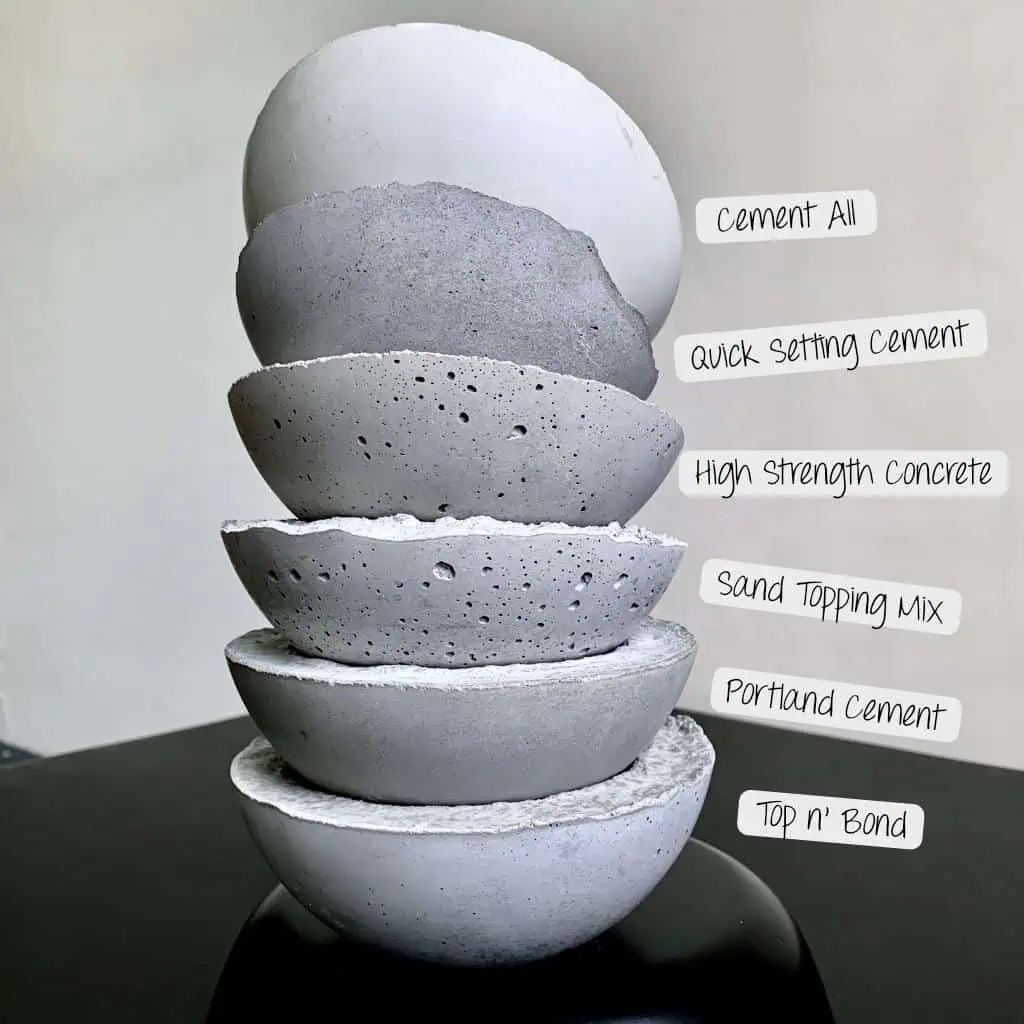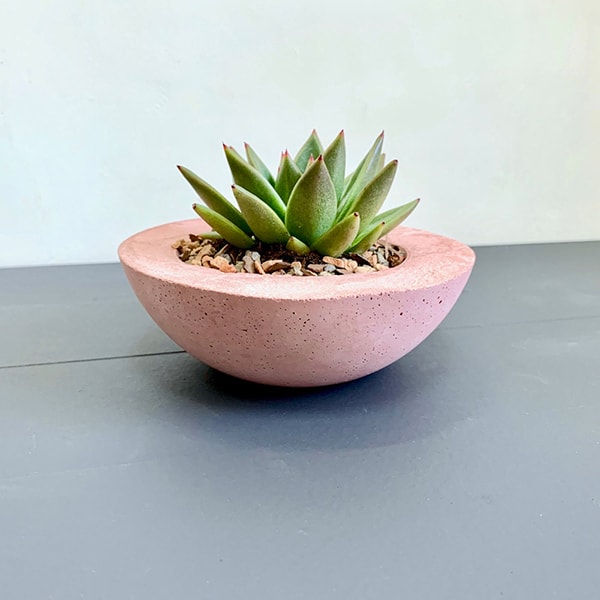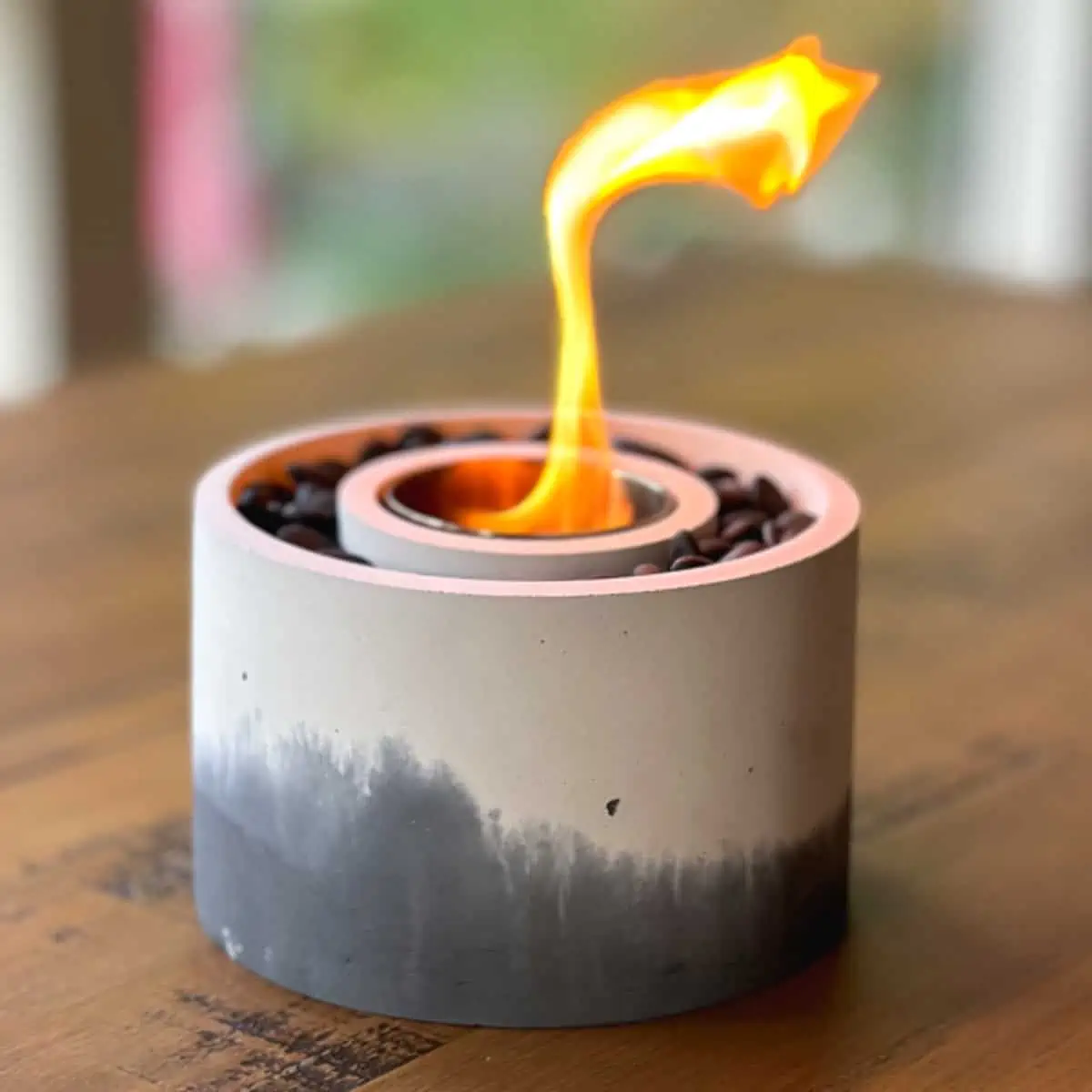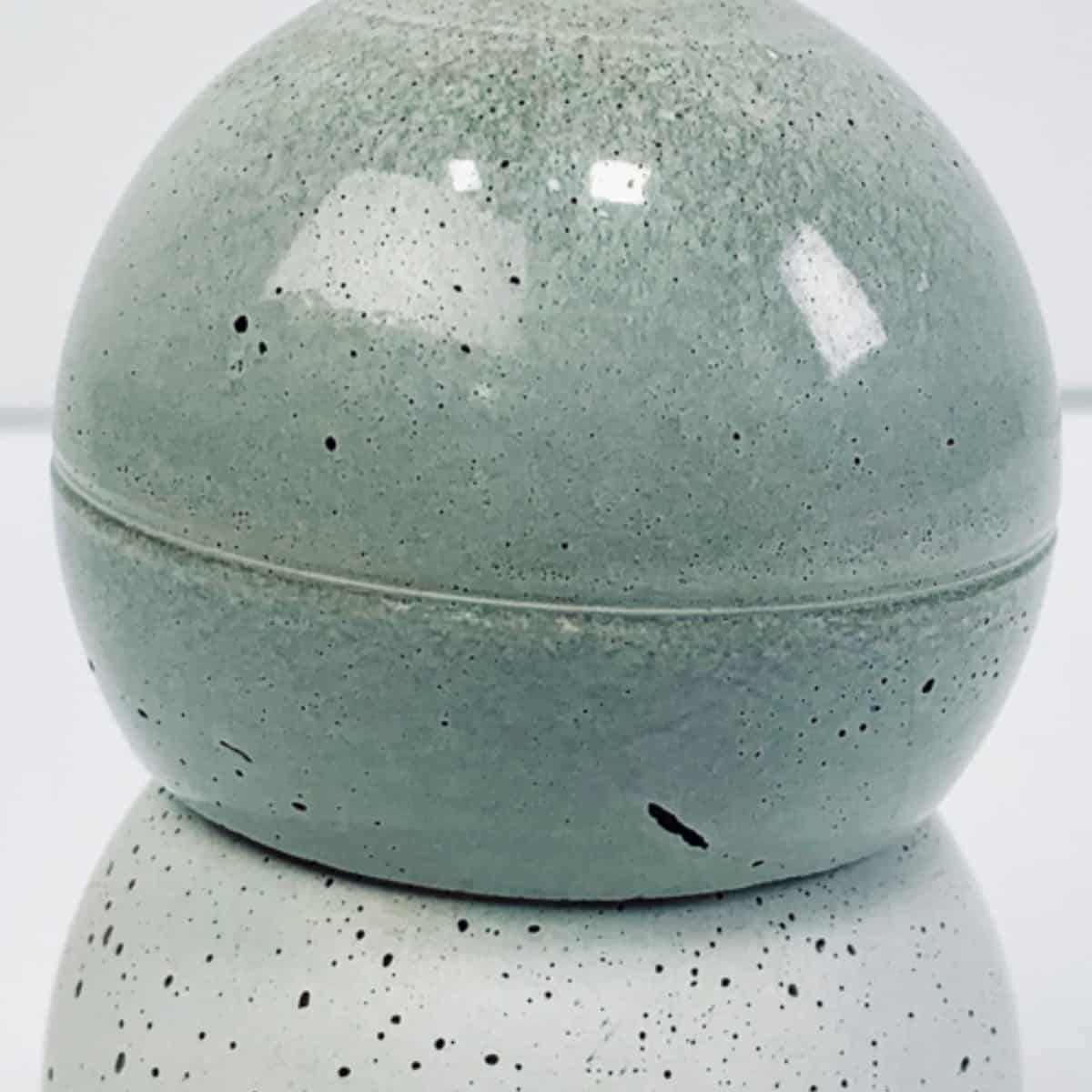Guide To Understanding Concrete Sealers: My Tests (Tips for Crafts)
Discover everything you need to know about using concrete sealers for crafts and gain valuable insights from my testing experiences.
In the early stages of my cement craft journey, I was bewildered by the many concrete and sealer options and their different effects.
With variations in sheens and significant differences in performance, I embarked on a mission to test the effects of sealers.
This guide shares insights from my experiments on how sealers perform on concrete crafts like planters and home decor items.

Why Concrete Sealers Matter?
Understand the importance of concrete sealers and when to use them in crafting projects.
Concrete sealers contribute to aesthetics and serve a functional purpose in sealing the concrete.
Understanding the nuances of different sealers is essential for crafting durable and visually appealing concrete creations.
I also performed a series of tests on six different concrete craft mixes. The cement tests article is an important guide to understanding concrete crafts. Please bookmark it for reading later.
Testing Methodology
The systematic approach I employed to test the concrete sealers.
How I compared different sealers based on their impact on sheen, color, and performance.
Concrete Sealer Effects On Sheen
The goal was to explore the visual impact of sealer’s sheen on cement planters.
Gain insights into how different sheens and colors react to the application of sealers.
Concrete Sealer Performance: Preventing Soil Discoloration
To uncover the results of a crucial test aimed at understanding whether sealers can prevent soil discoloration in cement planters.
Analyze the impact of sealers on matte and shiny surfaces.
Concrete Sealant Performance With Water Evaporation
To discover the role of sealers in water retention within cement planters.
Understand the difference in water evaporation between sealed and unsealed containers.
Gain valuable insights for maintaining plant health in concrete pots.
Concrete Sealer Effects on Sheen
Sealers are crafted with varying degrees of sheen, offering options that typically fall into three categories: matte, satin, or glossy.
It’s important to note that the levels of sheen can differ not only between different brands but also within the product lines of a single brand.
For instance, the satin finish of one brand may exhibit more shine than another.
For this experiment, I used a matte sealer that I had on hand, with plans to conduct future tests using a high gloss sealer.
Test Setup:
I applied the matte sealer to three different cement planter balls, covering only one side of each ball.
I carefully selected planters with different sheens before the sealer application.
As a matte sealer tends to be less shiny, the visual difference was subtle, but the results were intriguing.
Despite difficulties capturing the nuances with the camera, I could visibly observe the sealer on each planter.
Arrows in the photos indicate the side where the sealer was applied.
Concrete Sealer Effects On Sheen
** Updated 3/6/20– see the colored planters below*
The concrete sealant I used is a matte sealer, which is what I had on hand, and at some point in the future, I will perform these tests with a high gloss sealer.
I applied a matte sealer to three different cement planter balls, but to only one side of each cement planter ball.
I chose three planters that had different sheens before the cement sealer application.
Being a matte sealer, instead of shiny, there isn’t a strong visual difference, but the results were still interesting.
In real life, I can actually see the sealer on each of these.
Unfortunately, no matter what I did with the contrast and lighting, I couldn’t get the camera to pick up what I could see with my naked eye, so bear with me.
I have the arrows pointing toward the side where the sealer was applied.

Matte Sealer Application:
The concrete sealant I used is a matte sealer. In the future, I plan to repeat these tests with a high gloss sealer.
I applied a matte sealer to three different cement planter balls, covering only one side of each.
The sheens of the original planters varied, providing distinct starting points for the test.
- Matte Planter (Left Ball):
- Sealed: Yes
- Sheen: Matte
- Result: Visible sheen on the sealed side, slightly darker.
- Satin Planter (Middle Ball):
- Sealed: Yes
- Sheen: Natural Satin
- Result: Barely visible sealer, no added shininess, slightly darker.
- Satin Planter (Right Ball):
- Sealed: Yes
- Sheen: Satin
- Result: Slightly darker look, difficult to discern any difference in shininess.
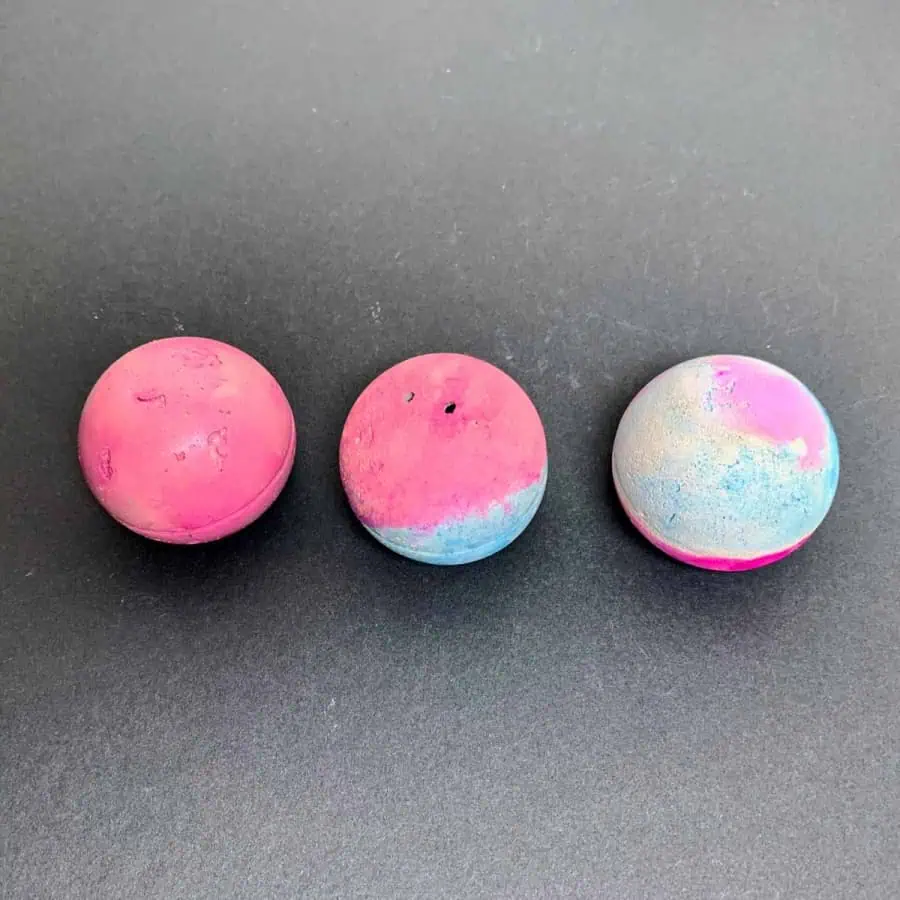
Note: Testing with matte planters colored with alcohol ink revealed a noticeable sheen on the sealed one.
Colored Matte Planters:
Upon testing with matte cement planters colored after curing using alcohol ink:
- Left Planter: Sealed with Easy Seal, a noticeable sheen despite being labeled “matte.”
- Middle Planter: Sealed with Stone Care spray sealer, maintaining an actual matte appearance.
- Right Planter: Unsealed, equally matte as the middle planter.
Update late 2023: Easy Seal isn’t currently available, but this is my current favorite substitute sealer.
The findings from these tests reveal that even a matte sealer, traditionally considered low in sheen, imparts a subtle luminosity to the treated surface.
To explore various ways to color concrete crafts, and to see my experiments testing colors, check out my post: Concrete Crafts Pigment Tests- How To Color Concrete And Cement.
Concrete Sealer Performance: Preventing Soil Discoloration
This particular test was a source of actual anticipation for me, driven by curiosity about a common issue I had observed with my concrete planters.
The phenomenon of discoloration I often saw in some of my creations led me to suspect that it stemmed from a combination of soil, water, and the porous nature of cement.
Notably, not every cement planter in my collection had a discoloring effect.
This discrepancy drove me to test whether applying a sealer could prevent or minimize this discoloration.
Additionally, would the glossy natural finish of some cement planters serve as a natural shield against discoloration?
This question prompted a closer examination of the relationship between surface sheen and the protection of cement from unwanted discoloration
I tested whether a sealer would prevent or reduce soil discoloration in cement planters.
Each planter had its drainage hole plugged for quicker results.
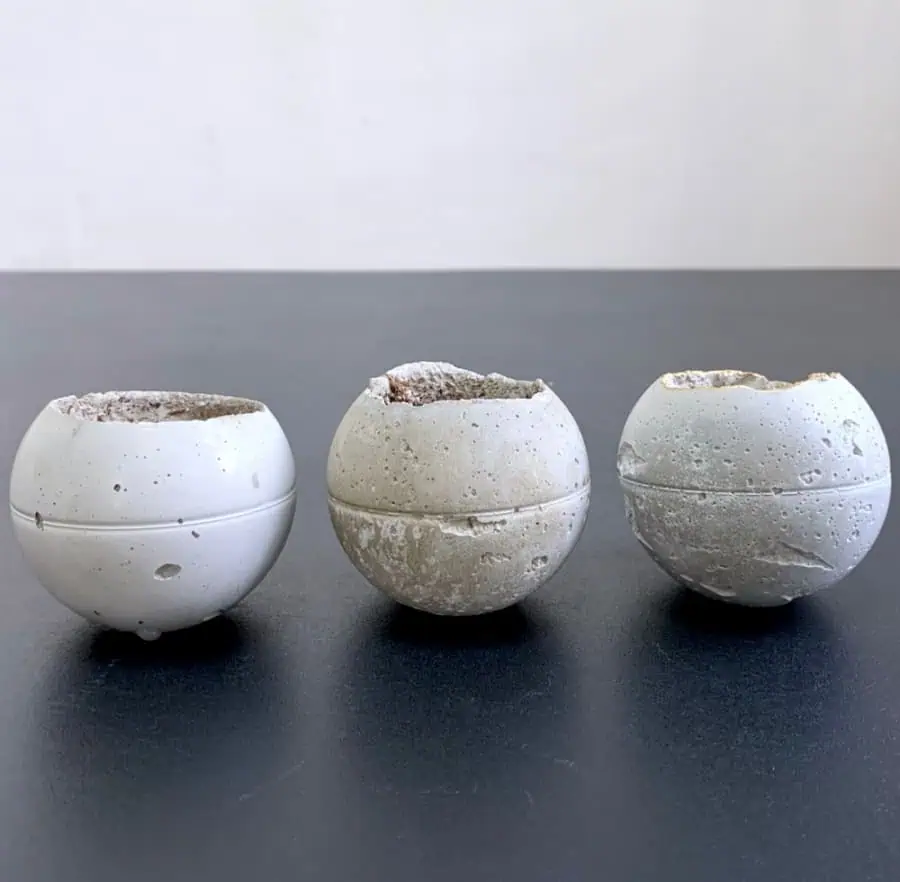
Results:
- Cement Planter Ball 1 (Left):
- Sealed: No
- Sheen: Smooth, shiny
- Result: No discoloration
- Cement Planter Ball 2 (Middle):
- Sealed: No
- Sheen: Matte
- Result: Dark discoloration due to salts in the soil
- Cement Planter Ball 3 (Right):
- Sealed: Yes
- Sheen: Matte
- Result: No discoloration on one side, and the backside has a grey color (possible uneven sealer application).
I suspect I didn’t apply the sealer uniformly to the backside; however, had there been no sealer, it might have resembled the planter in the center.
Concrete Sealant Performance: Water Evaporation
Understanding water absorption in cement planters.
In the following tests, we look at the water absorption characteristics of cement planters, shedding light on a crucial aspect of concrete sealer performance for concrete crafts.
As plant enthusiasts, we share a common concern for the well-being of our green companions and strive to provide them with optimal care.
The primary question is whether sealing a cement planter enhances water retention capabilities.
We intuitively understand that a plant in a plastic pot may require less frequent watering than one in a cement pot.
However, to what extent does sealing influence the evaporation rate, distinguishing between a sealed and an unsealed cement planter?
Water Absorption in Unsealed Concrete vs Plastic
I compared the water evaporation rates in this experiment between a plastic cup and an unsealed cement pot.
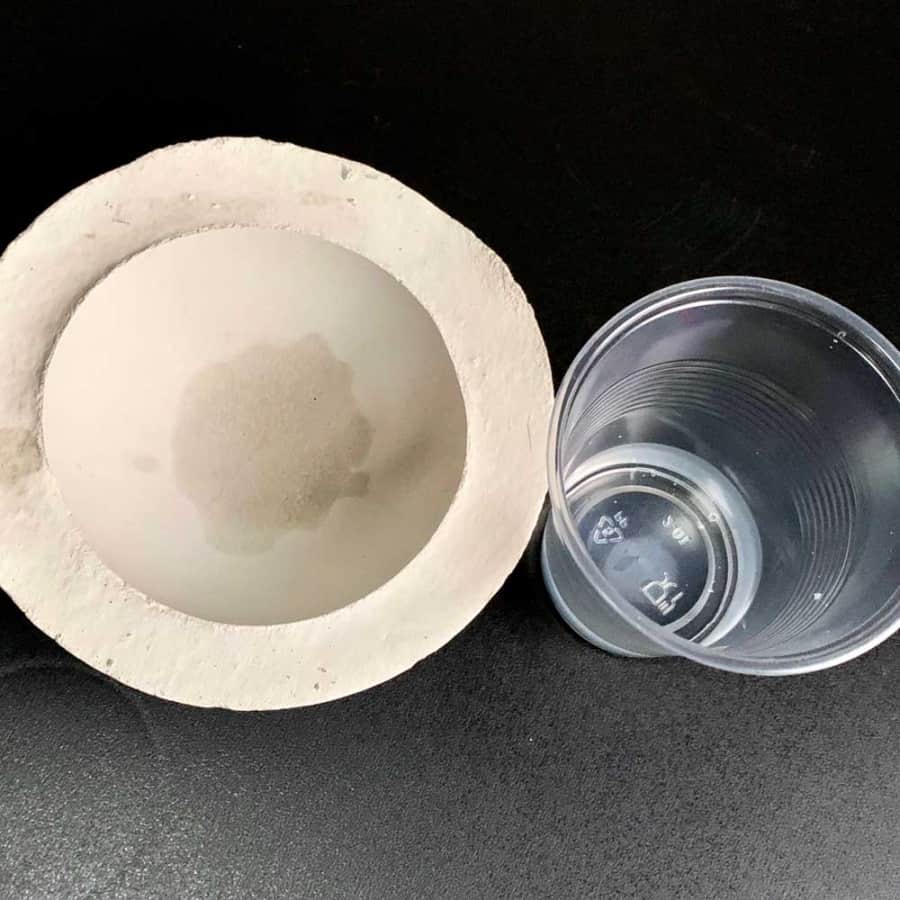
Initial Setup:
I added 4 oz of water to the plastic cup and the cement planter.
- Observations:
- Duration: A little more than a week.
- Outcome: The water completely disappeared from the cement planter.
- Notably, the plastic cup retained three out of the initial 4 ounces of water, highlighting a substantial difference in evaporation rates.
Water Evaporation in Sealed Cement vs Unsealed Cement
I compared water absorption in an unsealed planter with a sealed cement planter.

- Setup:
- I used two cement vessels (no drainage holes).
- I sealed one vessel inside and out while the other remained unsealed.
- I added 2 oz of water to each cement vessel.
- Results:
- Unsealed Vessel: In less than a week, all the water evaporated from the unsealed vessel.
- Sealed Vessel: A little more than a tablespoon of water remained in the sealed container.
This information provides essential insights when deciding whether to seal your concrete planters.
For those curious about the compatibility of concrete pots with plant health, explore our article dedicated to this topic. Additionally, I’ve written a tutorial on properly sealing concrete planters and when it’s most important to seal them.
For additional information on cement/concrete crafts, including materials, terminology, safety, and clean-up tips, refer to my post: Getting Started: Techniques For Making Cement Crafts.
Don’t forget to Pin it for later!




